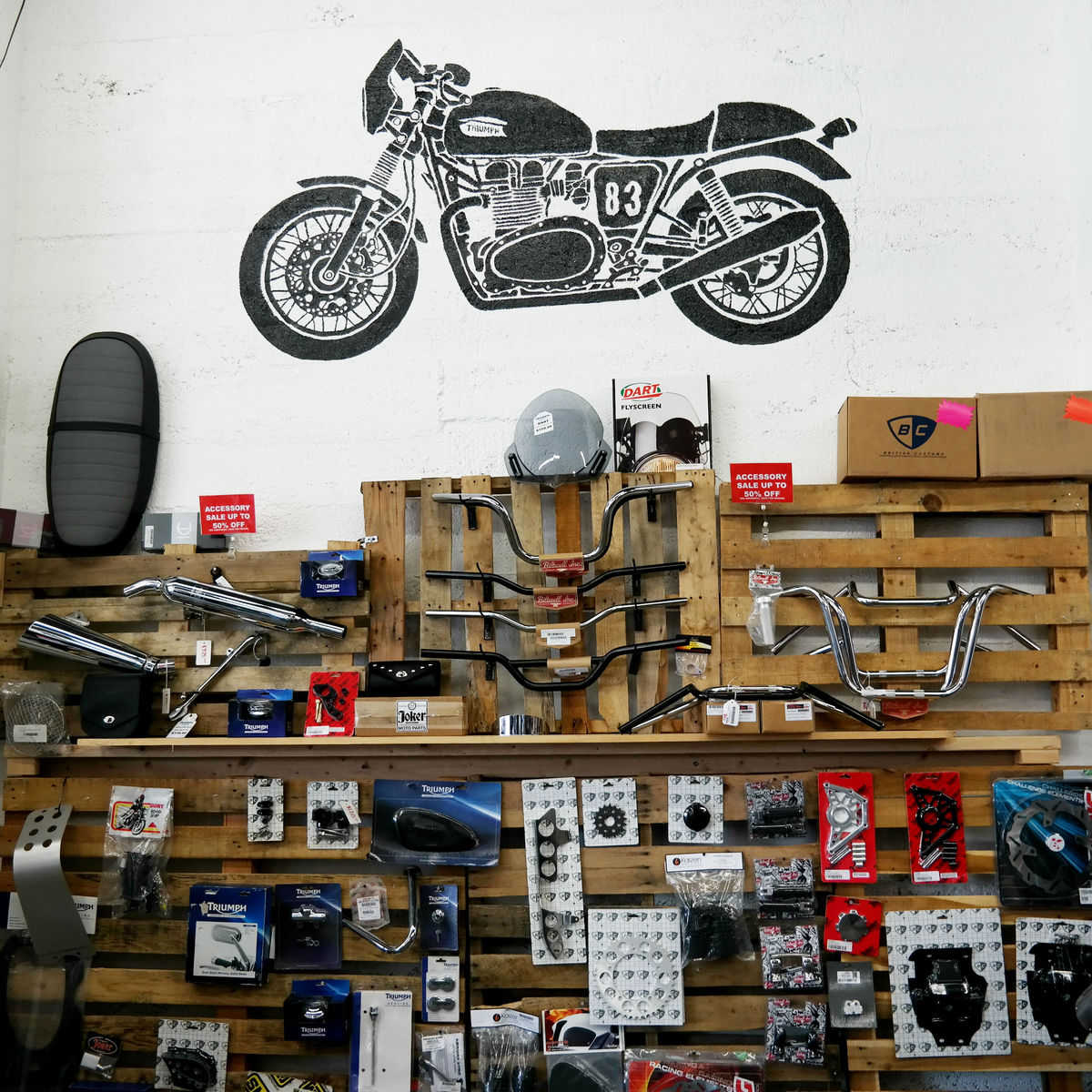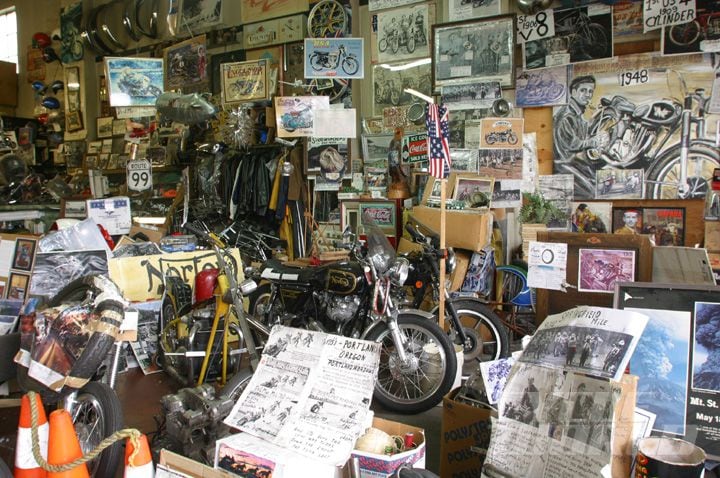Comprehending the Crucial Parts of a Motorbike: A Comprehensive Overview for Enthusiasts
For motorcycle fanatics aiming to raise their riding experience and guarantee their bikes run smoothly, comprehending the vital parts of a bike is vital. Each element, from the engine's detailed workings to the important role of the braking devices, not just affects performance yet additionally security and convenience. This guide will certainly stroll with the basic parts that every biker ought to know with, enabling notified selections in both maintenance and possible upgrades. As we start this expedition, one must ask: just how does each component interact to create the smooth adventure every lover looks for?
Engine Elements

The camshaft plays a critical function in managing the timing of the engine's valves, making sure the specific opening and closing necessary for effective fuel and air intake, as well as exhaust expulsion. This timing is vital to keeping optimum engine performance and performance. Furthermore, the carburetor or gas shot system, depending upon the motorbike version, is in charge of blending air with gas in the right proportion for burning.
The cooling system, either air or liquid-based, works to maintain the engine's temperature within operational limits, avoiding overheating and making certain durability - motorbike shop. Each element, carefully made and integrated, adds to the seamless procedure of the engine, defining the motorbike's power output and overall performance
Transmission System
Essential to the bike's functionality, the transmission system ensures reliable power transfer from the engine to the wheels. This system comprises several important components, consisting of the clutch, transmission, and last drive, each playing an important role in converting the engine's power right into activity. The clutch, usually run by a hand bar, offers to involve and disengage the engine from the transmission, permitting smooth gear changes and regulated acceleration.
The gearbox, frequently referred to as the transmission proper, consists of a collection of gears that riders can by hand shift through to change the bike's speed and torque result. These gears are set up in a series that makes it possible for the motorcycle to increase smoothly and maintain optimum engine efficiency throughout different rates. A lot of bikes utilize a sequential transmission, calling for the biker to change equipments in an established order.
Braking Devices
While comprehending the transmission system is crucial to harnessing a bike's power, equally important is the ability to control and quit that power efficiently, which is where stopping mechanisms come right into play. Brakes are critical for safety and efficiency, giving the biker with the necessary control to navigate different terrains and problems. Generally, motorcycles feature 2 types of braking systems: disc brakes and drum brakes.
Disc brakes are a lot more prevalent in contemporary motorbikes as a result of their remarkable performance. They contain a brake disc, caliper, and pads. When turned on, the caliper squeezes the brake pads against the rotating disc, converting kinetic power into heat, thereby slowing the wheel. This system provides much better warm dissipation, consistent performance, and improved quiting power, specifically in wet problems.
Alternatively, drum brakes, though much less typical, are still discovered in some bikes. They function by pushing brake footwear versus the internal surface of a drum affixed to best summer motorcycle pants the wheel. While usually much less reliable in warm dissipation and quiting power, drum brakes are simpler and extra economical.
Recognizing these stopping systems' subtleties enables riders to keep their bikes appropriately and appreciate the design that makes sure reliable and safe quiting.
Suspension and Guiding
Suspension and steering systems are essential parts that dramatically influence a bike's handling and experience convenience. The suspension system, consisting of forks at the front and shock absorbers at the back, takes in road irregularities, enhancing stability and control. Front forks, commonly telescopic or upside down, compress and rebound to alleviate influences, while back shock absorbers maintain tire call with the roadway, essential for grip and safety.
Guiding, focused around the handlebars, attaches the biker to the bike's directional control. The guiding head bearings guarantee smooth operation, enabling exact ability to move. Appropriate positioning and maintenance of these bearings are essential for predictable guiding action and minimizing biker fatigue.
The suspension's adjustability is one more important lightest full face helmet element; preload, damping, and rebound settings permit modification to match numerous riding styles and conditions. This versatility is vital for maximizing efficiency, whether browsing metropolitan streets or tackling sturdy routes. Innovations like electronic shock absorber provide real-time changes, improving ride high quality across varied terrains.

Electric Systems
After guaranteeing a controlled and smooth ride via effective suspension and guiding systems, attention turns to the electric systems, a crucial aspect of contemporary motorbikes. These systems play a vital function not only in starting the engine yet also in powering different elements that improve the performance and security of the bike.
At the heart of a motorbike's electric system is the battery, which shops electrical power necessary for starting the engine and powering auxiliary systems - motocross gear nz. The alternator or generator, paired with the rectifier-regulator, guarantees the battery continues to be billed while the motorcycle functions, transforming power right into electric energy and maintaining voltage levels
The ignition system, one more vital part, is in charge of igniting the air-fuel combination in the engine's cylinders. Modern bikes frequently make use of an electronic ignition system, using greater effectiveness and dependability compared to traditional systems.
Illumination systems, including headlights, tail lights, and signs, are also crucial, making certain exposure and safety for the rider. Additional digital components such as sensing units, control devices, and displays add to advanced attributes like gas shot administration, anti-lock braking systems (ABS), and electronic control panels, better boosting the riding experience.
Conclusion
An extensive comprehension of a motorcycle's important parts, including the engine, transmission system, braking mechanisms, suspension, steering, and electrical systems, is important for enthusiasts aiming to maximize efficiency, comfort, and security. Mastery of these elements allows for educated decisions relating to upkeep and upgrades, ultimately enhancing the see post riding experience. By integrating this expertise, cyclists can ensure their motorcycles run at peak effectiveness and dependability, thereby taking full advantage of both enjoyment and longevity of their cars.
For motorcycle fanatics looking to raise their riding experience and ensure their bikes run efficiently, comprehending the crucial parts of a motorcycle is vital.Integral to the motorbike's performance, the transmission system makes certain efficient power transfer from the engine to the wheels.While understanding the transmission system is crucial to harnessing a motorcycle's power, just as essential is the capacity to regulate and quit that power successfully, which is where braking systems come into play. Commonly, bikes include 2 types of braking systems: disc brakes and drum brakes.
A comprehensive comprehension of a bike's crucial parts, consisting of the engine, transmission system, braking mechanisms, suspension, guiding, and electrical systems, is vital for fanatics aiming to enhance comfort, performance, and security.